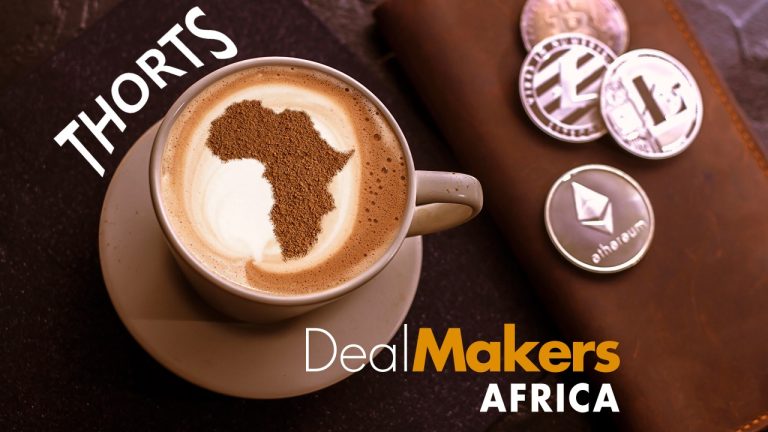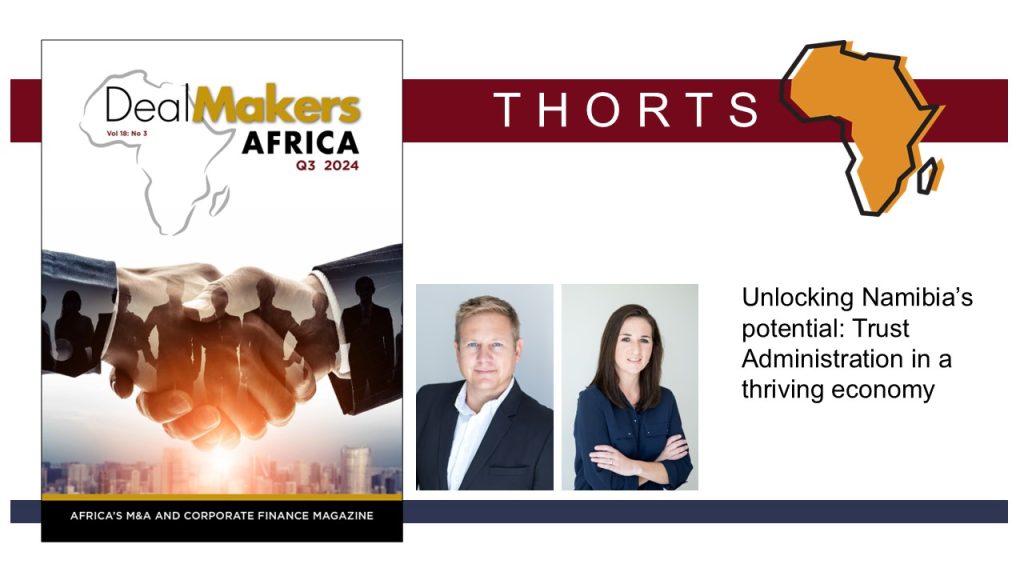Afrimat has reminded the market that this is a tough year (JSE: AFT)
The market’s love for Afrimat is reflected in the share price
If you read the tone of Afrimat’s business update, they really couldn’t make it more obvious that this won’t be a great financial year. In the interim period (the six months to August), HEPS was down by a rather spectacular 79.9%. Although the announcement suggests that the second half was better, it still feels impossible that they could’ve clawed back an interim period like that.
Despite this, the share price is essentially flat over 12 months. It’s unusual to see such a disconnect between the price and the earnings, even for a stock that is a market darling.
In the Construction Materials business, the integration of Lafarge South Africa has been completed and cement operations are at acceptable levels. Overall, this segment is poised for growth. This is obviously one of the things boosting the share price.
The Industrial Minerals side also has a positive story to tell, with Afrimat describing a significant recovery in that business.
In Bulk Commodities, Nkomati returned to profitability in January 2025. All eyes are on the new financial year, with commitments for 80% of the new year’s export volume. Of course, this doesn’t make up for all the issues in the financial year ending February 2025. Afrimat continues to face problems with rail performance, with the company focusing on the silver lining of “volumes have not deteriorated” rather than any kind of improvement coming through. Local iron ore volumes remain a challenge, with the ArcelorMittal disaster having been a huge drag on performance at the start of the year. Although things have improved since then, there’s much uncertainty around the position going forward.
The Future Materials and Metals part of the group is small for now, with design work at Glenover and ramp-up in the phosphate plant.
Afrimat has confirmed that earnings for the year will be lower than the previous year. After the interim performance, nobody is surprised to hear that. The debate of course is around just how much lower the full-year numbers will be. The share price feels too optimistic to me.
If you’re keen to hear directly from management, Unlock the Stock will host Afrimat as its first event of 2025. As always, you can attend the live webinar and ask your questions. The event is scheduled for 27th February, a few days after the pre-close briefing session that management is hosting. Our efforts at Unlock the Stock are designed to give you as much management access as possible, levelling the playing field for retail investors vs. institutional investors. Best of all, attendance is free! You just need to register here>>>
Anglo American has given more details on the Anglo Platinum demerger (JSE: AGL)
They will receive a meaty dividend before the time
On the same day that Anglo American Platinum released results and announced its dividend (see further down), Anglo American reminded the market of its plans for the demerger. The goal is to get it done by June, with Anglo retaining a stake of 19.9% that they will “exit responsibly” over time i.e. sell into the market in such a way as to avoid crashing the market price. For context, the current stake is a 67% shareholding.
Anglo American will ask its shareholders to vote on the demerger at the AGM at the end of April. This means that Anglo American will bank a dividend of around $0.6 billion before the demerger. Read on to properly understand this…
Anglo American Platinum declares a huge special dividend (JSE: AMS)
The PR spin is that this is to have a more efficient capital structure
Here’s a bit of fun for you. Anglo American Platinum (Amplats) has released its 2024 results. They are ugly, with headline earnings down 40% despite a 4% increase in sales volumes and a reduction in all-in sustaining cost per ounce of 13%. PGM prices remain a huge headache and Amplats obviously can’t do anything to control that.
That’s not the fun part. We are getting to the fun part.
Despite the pressure in the business, Amplats has declared a final dividend of R3 per share, which is a 40% payout. This shows that although earnings are down, they are still able to stick to their usual capital allocation plans.
In addition to this (and here’s the fun), they’ve declared a special dividend of R59 per share. That is absolutely huge, with R15.7 billion about to flow out of the company. Does this sound like the kind of thing a company in an uncertain environment should be doing? Wouldn’t it be better to retain that cash and possibly pick up some great bottom-of-the-cycle acquisitions?
Of course it would.
Now, the official story is that Amplats wants to “set its independent capital structure in the most efficient manner” – something you would normally see from a company making more money than they possibly know what to do with. That’s the kind of narrative I saw recently at JPMorgan in the US, for example. Amplats is not even remotely in that category.
Take the PR spin off it and it’s really quite simple: the mothership Anglo American wants to extract as much cash as possible before they demerge Amplats. Although Amplats will be cut loose with an acceptable balance sheet, they certainly aren’t being given an acquisition war chest to move forward with.
Aveng released results – and the share price still can’t find the bottom (JSE: AEG)
It dropped by another 4% on the day
After breaking hearts on Valentine’s Day with news of the group slipping into a loss-making position, the release of detailed results did nothing to improve the relationship with the market. Aveng’s share price is now down 28% over 7 days. Ouch.
This is what happens when your interim revenue for the six months to December drops by R2 billion and operating profit swings from positive R192 million to a loss of R356 million. Included in this number are losses from J108 and Kidston, the disastrous projects, of R885 million.
At headline level, this means a headline loss per share of R3.09 vs. positive HEPS of R1.06 in the comparable period. Keep in mind that the share price is only R8.61!
Although cash on hand has increased from R2.8 billion to R3.0 billion, don’t get too excited about that number. They’ve recognised losses in this period that will only see a cash outflow in months to come. The income statement is telling you a lot about what is likely to happen to the balance sheet.
Can they claw some of this back in the second half of the year? Well, it’s not great to see that work in hand is down sharply from R37.2 billion to R30.1 billion. There’s a reduction in state government spending in Australia that is impacting the infrastructure segment in the business and more than offsetting the improved order book elsewhere.
The projects causing all the pain were awarded before Covid. Aveng makes the point that newly awarded projects are profitable. The issue in construction is that every contract looks profitable initially, otherwise why would the company agree to do it? It’s what happens in the years thereafter that counts.
Aveng still intends to separate its group into Moolmans (South African mining sector focus) and McConnell Dowell (infrastructure etc. in Australia, New Zealand and Southeast Asia). It remains to be seen how exactly they will structure this. Naturally, such a shocking period for McConnell Dowell isn’t helpful to this strategy.
CA Sales Holdings locks in another bolt-on acquisition (JSE: CAA)
This time, it’s in Kenya
After a truly spectacular run in the share price, even CA Sales Holdings took a breather in the market recently. With a return of 36% in the past year and a year-to-date dip of 4%, the market still has plenty of love for the company. Just look at the sell-off suffered by most of the other consumer facing businesses listed on the JSE. CA Sales may not sell directly to consumers, but the underlying exposure via the retailers is similar.
The strategy has been a combination of organic growth and bolt-on acquisitions, with the group following a smart approach of buying significant minority stakes and obtaining a pathway to control. I far prefer this strategy to 100% buyouts, as it ensures that the sellers are still incentivised to keep growing the business. There’s a big difference between partnering with entrepreneurs and allowing them to pass you the baton of whatever they’ve built.
The latest such example is the acquisition of 35% of Tradco, a route to market solutions business in Kenya. It has reach into other East African countries. This is firmly in the wheelhouse of CA Sales Holdings in terms of business model, although it does represent a tilt towards a different region in Africa to most of the existing exposure.
Importantly, CA Sales has the potential to acquire another 20% in the company. This is the pathway to control that I spoke about.
Emira has released the DL Invest circular (JSE: EMI)
This is a Category 1 transaction
Emira already holds a 25% interest in DL Invest. At the time of investing in that stake in 2024, Emira was granted an option to increase the stake to 45%. The aggregation rules on the JSE mean that the combined deal is a Category 1 transaction. If we didn’t have aggregation rules, it would make it very easy to circumvent categorisation of deals (and thus shareholder approvals and extensive disclosures) by breaking deals up into smaller tranches.
Emira has decided that international exposure is the gap in its story. The company has a direct property portfolio in South Africa that represents 69.7% of gross assets. They have 17.6% exposure to the US market and the rest in Poland, represented by the existing DL Invest stake. This deal is therefore designed to increase the exposure to Poland.
If all goes ahead, DL Invest will be 20.8% of Emira’s total investments and will contribute 12% of net income. There’s a long story in the circular about how Emira can get the stake at a discount to net asset value thanks to all the good stuff that Emira will bring to the relationship. In reality, property deals are done at discounts to net asset value all the time, all over the world. There’s nothing unusual about that.
Castleview Property Fund (JSE: CVW) holds 59.15% of Emira and has given an irrevocable undertaking to vote in favour of the deal. As these are ordinary resolutions, the shareholder meeting is thus a dead rubber as Castleview can simply approve the transaction.
Emira will fund the deal through a combination of existing cash reserves and space in revolving credit facilities that was unlocked through the disposal of the Western Cape portfolio to Spear REIT. Should property funds be swapping Western Cape exposure for Poland exposure? That doesn’t really seem to be in line with current trends, does it?
Quantum Foods has a positive story to tell (JSE: QFH)
Well, aside from the chicken looting in Mozambique!
I haven’t seen any headlines in a while about all the fighting between the board of Quantum Foods and certain shareholders. The board also had a fight with one of the non-executive directors. TL;DR: there’s been a lot of fighting.
Luckily, there hasn’t been a lot of pain in the business in the four months to January 2025. Egg sales are up, load shedding has basically disappeared and there were no HPAI outbreaks. That’s clucking excellent in comparison to what came before.
Although egg selling prices were down 13% on average (fellow Eggs Benedict fans rejoice), Quantum was able to offset this impact by enjoying a 70% increase in egg supply. With all poultry producers in South Africa enjoying a recovery in their flocks, egg prices are expected to keep dropping. Of course, there is the ever-present risk of an HPAI outbreak, so nothing is certain.
The other segments (broiler farming and the feed business) were described as having a “satisfactory” performance, so that looks positive alongside the layer farming business.
The negative news in this period was in the rest of Africa, specifically Zambia (where load shedding is an issue) and in Mozambique. The latter is quite a story, with a crowd attacking the layer farm on 26 December 2024 and stealing 16% of the layer birds! You can’t make this stuff up.
Spicy chicken action in Mozambique aside, the share price is up 34% in the past 12 months.
Nibbles:
- Old Mutual (JSE: OMU) CEO Iain Williamson has opted to take early retirement. He will step down on 31 August 2025 after an impressive 32 years with the company and 5 years as CEO. That’s quite an innings!
- Transaction Capital (JSE: TCP) announced that the commitment agreement in relation to the Road Cover disposal has become unconditional in accordance with its terms. That deal should now be final, which means Road Cover will sit in Mobalyz (SA Taxi) as part of Transaction Capital’s contribution to that business to try and keep it alive.
- Depending on how things go from here, Assura plc (JSE: AHR) might disappear from our market as suddenly as it arrived. The company has confirmed media speculation that it has received a preliminary, unsolicited approach from major institutional investors KKR and USS Investment Management. Although nothing is certain right now and it could all fizzle out, those companies have confirmed that they are considering a cash offer of 48 pence per share – a 28.2% premium to the share price on the London exchange on 13 February. The board keeps rejecting the proposals from the bidders, so this could end up going hostile with an offer directly to shareholders. Of course, things could just fizzle out as well. There’s very little liquidity in the stock on the JSE, as the market hasn’t had much of a chance to get to know Assura. It’s a large company, with a market cap of nearly R29 billion.
- The potential deal between Europa Metals (JSE: EUZ) and Viridian Metals is off the table. The idea behind the transaction was to reverse list Tynagh via Europa Metals, as Europa has disposed of the Toral Project. The clock is ticking for Europa, as they have only a few months to make a qualifying acquisition under AIM listing rules in the UK. Reverse takeovers are fun things where a listed company goes in search of an asset to be injected into the company, usually in exchange for shares. The worry is that although the Tynagh project had decent economics, Europa has noted that European conditions are not conducive to finding funding for a project like this. That’s going to make this acquisition search a lot harder.






















